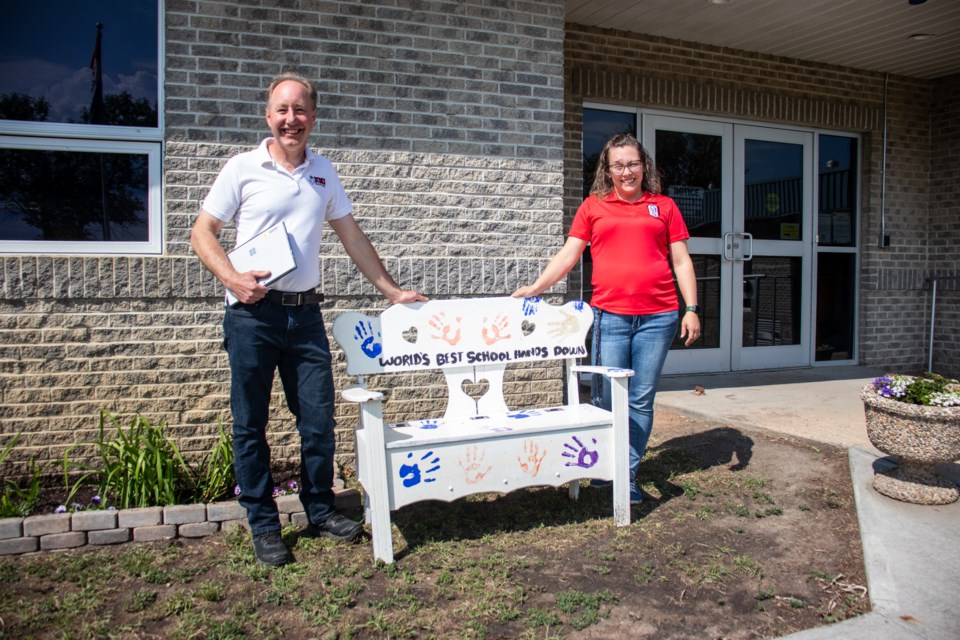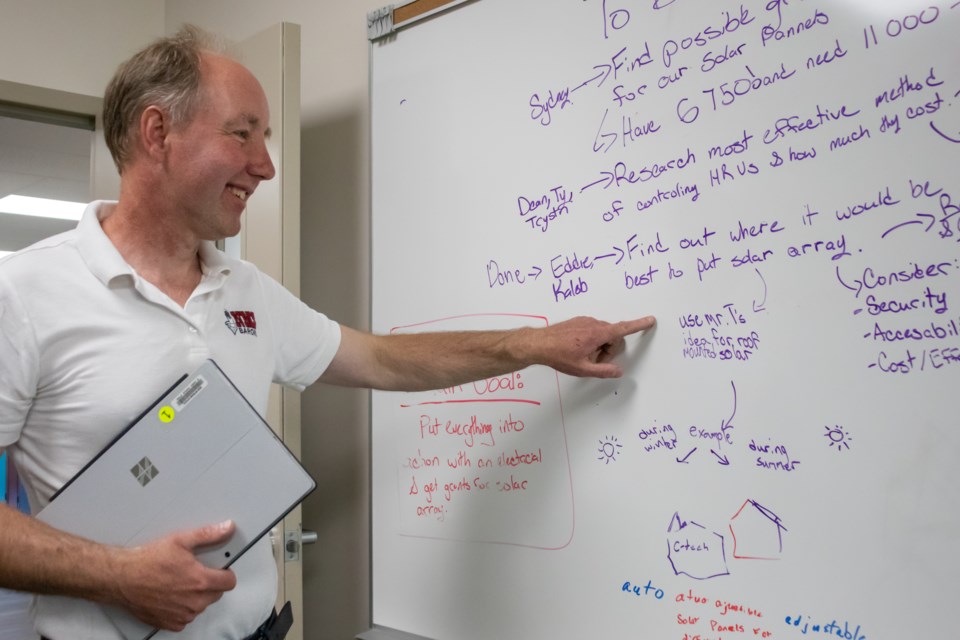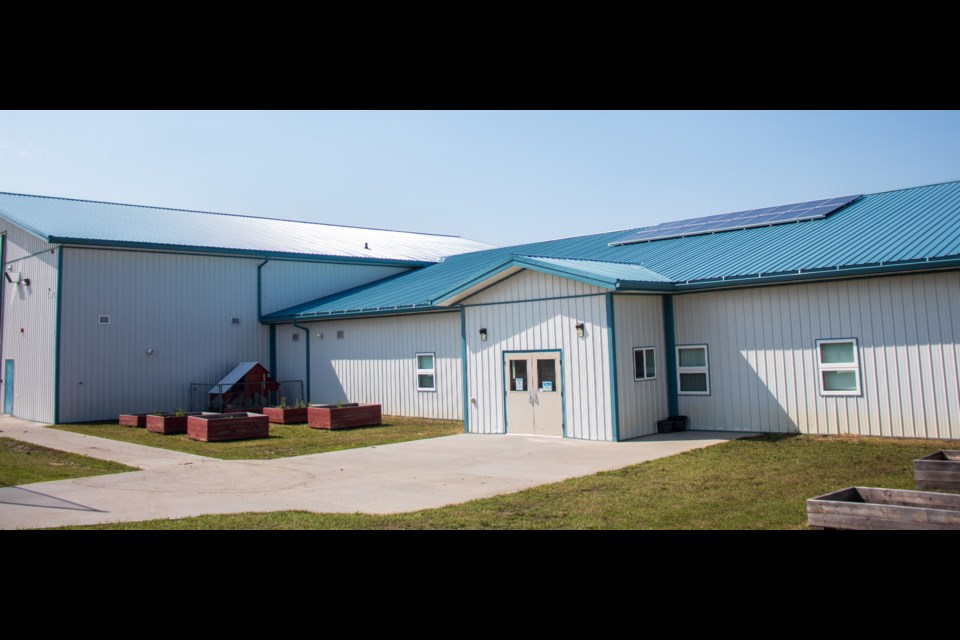ST. PAUL – Just outside the entrance of New Myrnam School is a bench written with the words “World’s Best School Hands Down” in large, bold letters. It is a testament to the students’ pride in their school.
The bench was created by a student a few years ago, and the colourful handprints that adorn it were painted by other students, recalls the school’s principal Danielle Eriksen. “It was so cute, and we’ve had it in the back school yard for the last five years, so we’ve pulled it out and brought it to the front.”
Robert Tymofichuk, assistant principal, added it was important for the school’s students back then to say, “We go to what we feel is the world’s best school.”
Years later, the bench appears to be somewhat of a prophecy as New Myrnam School recently made it to the Top 10 shortlist of the World’s Best School Prize for the Environmental Action Category. The award was presented by T4 Education, an international organization of educators.
“To be recognized internationally for that has just been incredible,” said assistant principal Alyssa Kalynchuk. New Myrnam School is the only school in Canada to be shortlisted this year.
The educators believe the recognition was the result of the school’s initiatives and projects that began seven years ago. These projects involve a sustainable greenhouse project, renewable energy system designs, designing and fabrication of a renewable energy vehicle, a tiny net-zero home, and overall efforts to reduce society's carbon footprint.
RELATED: Small rural school trying to change the world through STEM
New Myrnam School is a “special place” with a very personalized education, working on projects involving energy, the environment, and projects that simply aim to make the community better, said Tymofichuk.
The initiative was started by the school’s former principal and current St. Paul Education associate superintendent, Keith Gamblin. The projects that have been integrated into the school’s curriculum may be considered by many as different compared to Canada’s traditional school system.
When asked if there were ever any pushbacks or concerns regarding the unique approach to learning, Kalynchuk recalled there were some concerns in the beginning, “because it was totally different than what was going on at the school prior.”
“Honestly, after that first year, when the kids were doing the hands-on projects,” it helped them retain what they learned, said Kalynchuk. “So, after that first year, I think it really solidified it for the students and the parents that there is valuable learning that comes out of these projects.”
Eriksen added that she recognizes change can be scary, but change can also be good if it allows “you to do something better.”
The school and its staff are also working to “change our perspective as adults on what education should look like,” and that it can look different and “better serve more students.” It’s a change that gives all students better skills, said Eriksen.
Kalynchuk said that as teachers and educators, they are not experts in fields such as environmental technologies. “So, the students can’t come to us for the answers because we don’t know. We’re learning alongside the students and setting a very good example as well.”
To fill the gap, the school involves experts in the community and beyond - people who know what they are saying, what they are doing. Many people who are experts in various fields also reach out to the school to help with the projects, according to Eriksen.
“We have in Alberta, amazing expertise in terms of the people out there,” said Tymofichuk, and it’s a matter of tapping into those people.
For example, a group of students took a trip to Lakeland College to learn from industry experts about commercial solar trackers to help them work on one of their projects, said Tymofichuk.
The school’s projects are student-led, with teams of various grades working together on individual pieces of a project.
Grant funding
The projects would not be possible without grants, and students are involved with the grant-application processes.
“The kids are doing the grant writing,” said Tymofichuk, adding the students research and look for grants to support the projects they are willing to tackle, such as the Student Action Grant that provided $1,000 in funding, $5,000 from Inside Education’s A+ Energy Grant, and $750 from the Alberta Emerald Foundation.
Recently, the school also once again won the Alberta Emerald Award, which will give them an additional $2,000 in grant funding.
Students were also able to successfully secure a $10,000 grant through the Youth Harbor, a project of the Foundation for Environmental Stewardship, a non-profit that supports youth who are taking action on climate change and sustainable development.
The school has received a total of $19,250 in grant funding this year.
“We just have such pride in what we’ve done, and what the kids accomplished,” said Eriksen.






